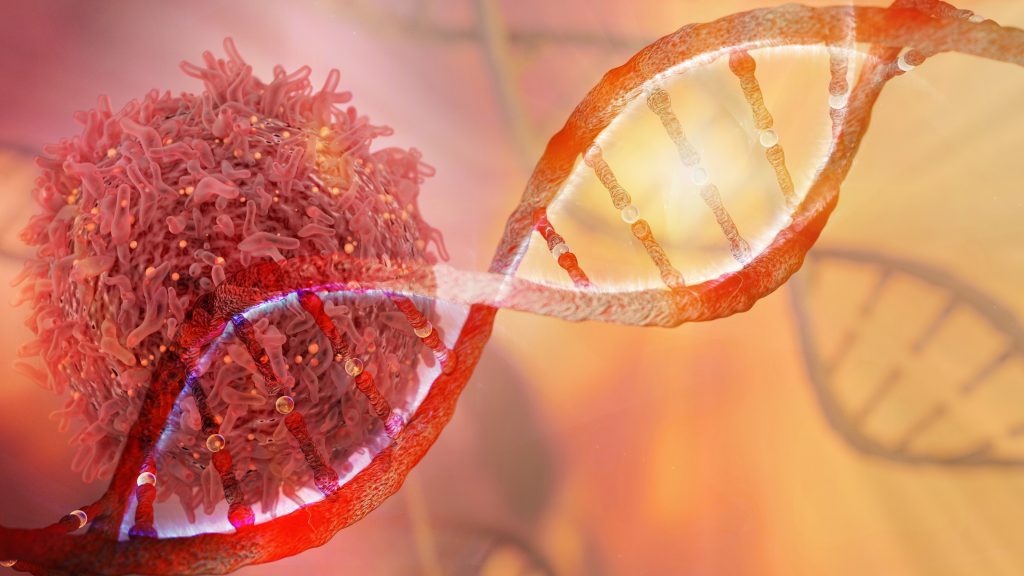There is not just one type of cancer, of course – every tumor is different. For this reason, researchers are continuously developing new treatments in the fight against this disease: In addition to traditional radiotherapy, chemotherapy and surgery, targeted and patient-tailored drugs expand the arsenal of therapeutic options. These “targeted therapies” interfere with specific molecules on cancer cells, paving the way to personalized medical approaches.

Cancer differs from patient to patient – both because of the nature of the tumor and also the course of the specific disease. Therefore, medical treatments need to be tailored to a patient’s individual situation in order to be effective. For this reason targeted therapies are the current focus of anticancer drug development. Unlike conventional chemotherapy, targeted cancer therapies only attack cancer cells without damaging healthy ones. To understand how targeted therapies work, the cancer development process has to be considered. Cancer arises when cells mutate, proliferating in an uncontrolled manner, and spread into surrounding tissues, destroying them. The growth of cancer cells does not depend on growth signals: Malignant tumors are able to secure their own nutrient supply and modify cellular metabolism. In addition, they can escape immune recognition, thus becoming a lethal threat for the human body.
Each tumor is unique
How can healthy cells mutate and acquire destructive potential? Genes are the key. Scientists agree that spontaneous genetic alterations, such as mutations in healthy tissue, are the first step in cancer development. Several hundred known mutations are suspected to be involved in both the origin and progression of cancer. But these mutations can also mean a medical opportunity: Every malignant cell transformation represents a potential target for cancer therapy. Doctors are increasingly relying on drugs that block key molecules needed in cancer growth alongside traditional chemotherapy. As a result, healthy cells are mostly spared. Still, the genetic profile of each tumor is unique since the genetic mutations leading to cellular “degeneration” may vary from patient to patient, even if the cancer type is the same.

As an example of new treatment approaches, laser microdissection can be used to separate mutated cells from healthy tissue, which allows for molecular genetic testing. A detailed molecular analysis of the single mutation can then provide useful information about its specific properties – and ideally also about the best therapeutic options for the specific tumor. Current approaches entail the use of monoclonal antibodies, which suppress growth signals “from the outside,” or small molecules such as the so-called tyrosine kinase inhibitors, which disrupt signal chains “from the inside,” or angiogenesis inhibitors, which block blood supply.
Immunotherapy approaches, on the other hand, trigger the patient’s immune system, which has been “sabotaged” by the cancer cells. With immunotherapy, there are several possible treatment options. For example, T cells taken from the patient can be modified (a process called chimeric antigen receptor T-cell therapy) to recognize and kill malignant cells after reinfusion, where the body’s own fluids are returned into the vascular system.
Biomarkers as indicators
Cutting-edge molecular diagnostic methods are the prerequisite for targeted therapies. They allow the detection of both mutations in healthy and malignant cells as well as other characteristic disease features. For example, variations in the expression or quantity of certain genes or gene products are so-called biomarkers. Such biomarkers provide information about the specific properties of a single tumor. Based on these characteristic features, doctors can then select the appropriate targeted therapy for each patient. Biomarkers also allow a prognosis for the efficacy of a therapy, and they also provide valuable information on the course of the disease. As one example, targeted cancer treatment depends only on the individual genetic profile and not on the type of tumor – whether it is breast, prostate or colorectal cancer.
Advances in radiotherapy
Radiotherapy, which is another pillar of cancer therapy and a localized intervention method, has also made progress, as relayed in a publication by a team led by Junior Professor Olalla Vázquez from the Philipps-Universität Marburg. The team created a new compound which can specifically destroy tumors. The activation and subsequent light irradiation of this compound inside malignant tissue leads to the generation of aggressive oxygen and to the destruction of the mutant tissue itself.
The aim of modern radiotherapy research is to further enhance the accuracy of irradiation in order to enable a gentle yet highly effective treatment. In the Marburg Ion Beam Therapy Center (MIT), for example, hydrogen ions (protons) as well as carbon ions are used for radiotherapy. This treatment is highly effective and offers new options for cancer patients with tumors, which are difficult to treat with conventional radiotherapy. The use of particle radiation allows optimal protection of risk organs such as the heart, lungs, liver or kidneys, even when treating extensive or very complex radiation target volumes.
Despite the development of new treatments and medications, tumor growth and spread cannot always be prevented. Not all tumor mutations have been researched and identified. Furthermore, there are not yet suitable medicines for all known changes. However, experts believe that intensive research efforts will lead to the development of new approaches to targeted and personalized medicine,hence igniting a whole new era of cancer treatment.

